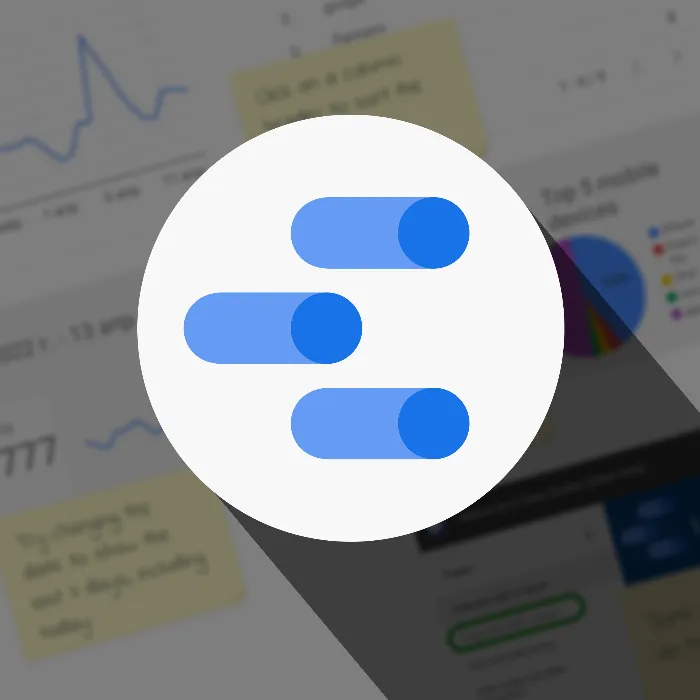With GoogleDataStudio, you have an incredibly powerful tool at your disposal that not only helps you visualize data but also allows you to easily edit and manage it. This guide is about the toolbar—the heart of Google Data Studio. Here you will learn how to use the various functions and elements to optimize and customize your reports.
Main Insights
The toolbar in Google Data Studio offers various options for editing and managing your reports. This includes adding charts, inserting controls such as dropdown lists, and the ability to insert URLs or images. Additionally, you can organize pages to keep your report clear and appealing.
Step-by-Step Guide
To fully utilize the potential of the toolbar in Google Data Studio, follow these steps:
Edit Toolbar and Reports
The toolbar of Google Data Studio is located at the top of the screen. Here you can click directly on your logo to return to the main menu and select your current report that you are editing. This allows for a quick switch between reports.

To change the view, make sure you click "Edit" at the top right to activate the editing window. Here you can name your report, for example, "Tobias Test GmbH." It makes sense to create a separate report for each company or department to maintain clarity.
Page Management
You can add new pages, rename, duplicate, or delete existing pages. Suppose you have already created a first page; you can add a second page with one click. If you have already added charts or information on a specific page that you want to use on the new page, you can simply duplicate them.
If you no longer need a page, such as the second page, you can remove it with the push of a button. To maintain clarity, it would be wise to name the pages appropriately, e.g., "Google Ads" or "Google Analytics."
Manage Data Sources
A crucial advantage of Google Data Studio is the ability to mix data sources. You can integrate data from both Google Analytics and Google Ads on one page. This provides you with a comprehensive overview of your marketing data.
If you want to add a new data source, go to the respective section and select the corresponding platforms. However, keep in mind that you can also use different pages for different analyses.
Add Charts and Visualizations
Another component of the toolbar is the function to add charts. You will find numerous chart options such as timelines, bar charts, and pie charts that help you present your data visually. Nowadays, you can even insert images, which was not possible before.

The various visualizations are not only useful for data analysis but also for presenting your reports. You can choose from the available charts and directly insert them into your view.
Interactive Controls
It is important to incorporate interactive controls like dropdown lists or sliders into your reports. These allow users to select specific data and adjust the analysis according to their needs. You can add and place these controls in the toolbar.

In addition to this, you have the option to customize the design of these controls to fit the layout of your report, for example, by changing the background or font color.
Customize Layout and Design
The layout option mentioned above allows you to create new pages or change the existing arrangement of your elements. You can also adjust the grid layout and spacing between elements to achieve a clear and structured design.
In edit mode, you have access to features like "Delete Content," "Insert," and "Duplicate," which allow you to efficiently manage your editing.
Insert URLs and External Elements
In Google Data Studio, you can also insert external content such as URLs or images. For example, if you want to add an image from your website, you can access it through a link and directly insert it into your report.
Conclusion and Outlook
If you have followed all the tips for using the toolbar, your report is already on a good path. In the next tutorial, we will look at how you can create a template to include standardized elements on every page.
Summary – Understanding and Effectively Using the Toolbar in Google Data Studio
The toolbar in Google Data Studio is a key tool for creating and editing reports. You have the ability to mix data sources, use different types of charts, and customize documents. By experimenting with the offered features, you will quickly find that Google Data Studio is not only powerful but also user-friendly.
FAQ
What is the toolbar in Google Data Studio?The toolbar in Google Data Studio provides various functions for editing and managing your reports.
How can I duplicate a page in Google Data Studio?You can duplicate a page with one click to make use of already existing elements.
Can I mix different data sources in one report?Yes, you can combine data sources like Google Analytics, Google Ads, and YouTube.
How can I add interactive controls?Controls can be added via the toolbar and placed wherever needed.
How do I customize the layout of my report?You can customize the layout by changing the arrangement of elements and adjusting the grid spacing.


